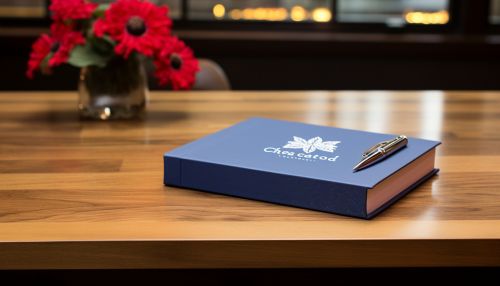Chicago Manual of Style
Overview
The Chicago Manual of Style (CMoS) is a comprehensive guide to English grammar and style, widely used in the fields of publishing and academia. It is published by the University of Chicago Press and has been in circulation since 1906. The manual covers a wide range of topics including manuscript preparation, grammar, usage, documentation, and the treatment of numbers, names, special terms, and punctuation.


History
The Chicago Manual of Style was first published in 1906 by the University of Chicago Press. The initial version was a 203-page guide created for authors and editors at the university press. Over the years, the manual has been revised and expanded to accommodate changes in writing style and the evolution of publishing practices. The current edition, the 17th, was published in 2017.
Structure and Content
The manual is divided into three parts: the first covers the publishing process, the second deals with style and usage, and the third provides a guide to citation. Each part is further divided into chapters that cover specific topics in detail.
Part I: The Publishing Process
This part of the manual provides an overview of the publishing process, from manuscript preparation and proofreading to copyright law and the digital production process. It also includes chapters on the use of illustrations and tables, mathematical copy, and foreign languages.
Part II: Style and Usage
This section of the manual covers grammar and usage, punctuation, spelling, names and terms, numbers, abbreviations, and quotations. It also includes a chapter on bias-free language, advising writers on how to avoid language that is sexist, racist, or otherwise biased.
Part III: Documentation
The final part of the manual provides a comprehensive guide to citation, covering both the author-date system and the notes and bibliography system. It also includes chapters on citing specific types of sources, such as books, periodicals, and electronic sources.
Usage and Influence
The Chicago Manual of Style is widely used in academic and publishing circles. It is the standard style guide for many university presses and is also used by many journals, magazines, and publishers in the United States and around the world. The manual's comprehensive coverage of style and usage, along with its detailed citation guidelines, make it a valuable resource for writers, editors, and publishers.
Criticism and Controversy
Despite its widespread use, the Chicago Manual of Style has faced criticism over the years. Some critics argue that the manual is too prescriptive, imposing rigid rules that stifle creativity and individuality. Others have criticized the manual's complexity, arguing that its detailed rules and guidelines can be confusing for users.
Editions
Since its initial publication in 1906, the Chicago Manual of Style has undergone 17 editions. Each edition reflects changes in writing style, publishing practices, and technological advancements. The most recent edition, the 17th, was published in 2017 and includes updated guidelines on electronic publishing and the use of digital sources.
